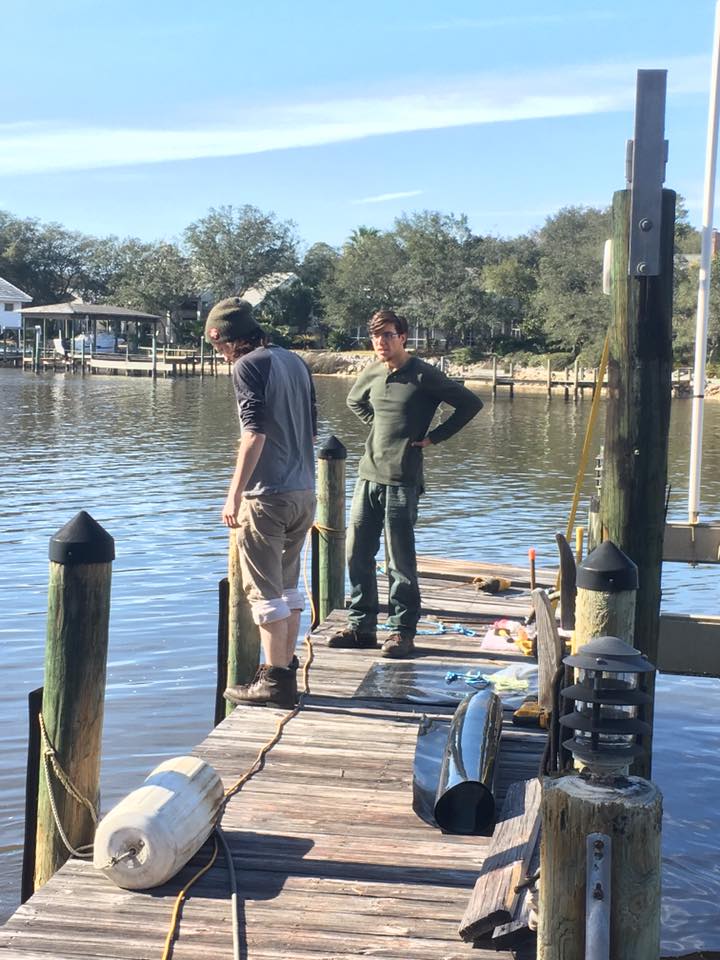DIY Tips for Simple Dock Repairs You Can Deal With
DIY Tips for Simple Dock Repairs You Can Deal With
Blog Article
Exactly How to Address Common Dock Fixing Issues for Safe Water Activities

Identifying Common Dock Issues
Identifying typical dock problems is essential for keeping the performance and security of your beachfront building. Regular evaluations can assist discover issues prior to they come to be severe, making certain both the longevity of the dock and the safety of those that utilize it.
An additional typical problem is the degradation of flotation protection gadgets. These devices are vital for maintaining the dock resilient, and any damages or punctures can trigger the dock to list or sink. Frequently checking for leaks or water logged drifts can preempt more significant issues.
Additionally, algae and barnacle accumulation on the dock's surface can produce unsafe and hazardous problems. This biofouling not only presents a danger to customers however can additionally speed up the degeneration of the dock materials.
Lastly, examining for indications of rust on metal parts is crucial. Corrosion can compromise the integrity of the dock's structure, making it unsafe. By routinely identifying these common dock problems, you can make sure that your dock continues to be secure and functional for many years to come.
Repairing Rotting Wood
When resolving the problem of deteriorating timber on your dock, it is crucial to act quickly to stop more deterioration. Begin by completely checking the entire framework to identify all influenced areas. Make use of a screwdriver to penetrate the wood; if it sinks in easily, the timber is likely decayed and needs instant attention.
When identified, get rid of the decomposed sections making use of a saw or carve. Make sure to reduce to healthy, solid timber, ensuring you get rid of all compromised material. After elimination, treat the staying timber with a timber preservative to avoid future rot. This therapy will aid guard against dampness, which is the primary reason for timber degeneration.
Following, replace the gotten rid of sections with marine-grade lumber or pressure-treated wood, which are more resistant to water damages. Safeguard the new pieces with galvanized or stainless-steel bolts to stop rust. In addition, using a waterproof sealant to the new timber can offer an added layer of protection.
Protecting Loose Boards
Just how do you ensure your dock stays safe and practical for all its customers? One essential facet is securing loosened boards, which can otherwise position considerable threats. Loosened boards not just boost the threat of tripping but can likewise endanger the structural stability of the whole dock.

For reinstallation, use stainless or galvanized steel screws, as these products provide remarkable resistance to deterioration in marine environments. Ensure the screws are long sufficient to permeate deep into the underlying support framework, yet not so lengthy that they extend through the dock's surface area. Pre-drilling pilot openings can aid stop the wood from splitting.
Finally, keep a normal inspection routine to recognize and attend to any type of new issues immediately. By safeguarding loosened boards properly, you add to the total safety and longevity of your dock, making it a trustworthy platform for water activities.
Maintaining Unsteady Pilings
Ensuring the security of unstable pilings is critical to preserving a practical and safe dock. Use a degree to inspect for upright positioning and guarantee they are driven deep sufficient right into the substrate to provide ample assistance.
If the pilings are located to be unsteady, one effective technique for reinforcement is using additional supporting. Cross-bracing with treated lumber or galvanized metal can significantly enhance stability. Anchor the read this post here braces safely to both the pilings and the dock structure to disperse loads uniformly.

Normal upkeep and routine review of the pilings' security are essential to guaranteeing long-lasting dock safety and security and performance.
Replacing Rusty Equipment
Addressing unstable pilings is simply one element of maintaining a dock's honesty; another crucial concern is changing rusty equipment. In time, direct exposure to moisture and salt can bring about the oxidation and rust of screws, bolts, and brackets, compromising the entire framework's safety and security. Routine evaluation for corrosion is important, particularly after severe climate or seasonal changes.
When rusty hardware is identified, instant action is needed. Begin by selecting marine-grade stainless steel or galvanized hardware, both created to resist the harsh marine setting. Make sure that you have the appropriate devices, such as screwdrivers and wrenches, to safely get rid of the old, rusty items without triggering further damages to the dock.
After removing the corroded equipment, completely clean the impacted areas to get rid of any recurring rust or debris. Use a rust-inhibiting guide to subjected steel surface areas before mounting the brand-new hardware. Tighten all components securely to stop future helping to loosen, and periodically inspect the fittings to make certain ongoing stability.
Changing rusty equipment not only extends the dock's life expectancy however likewise visite site substantially boosts the safety of water activities. By proactively managing corrosion, you protect both the framework and its customers, making certain a safe and secure and pleasurable waterside experience.
Conclusion
Normal inspections and maintenance are vital to he said address common dock fixing concerns and make sure secure water tasks. Such proactive procedures add to the general safety and security and functionality of dock structures, fostering a safe setting for water-based activities.
Making sure the safety of water tasks hinges considerably on the appropriate maintenance and repair of docks (Dock Repairs). These devices are necessary for maintaining the dock buoyant, and any kind of damages or leaks can create the dock to list or sink. By regularly determining these usual dock issues, you can make certain that your dock stays safe and practical for years to come
Making sure the stability of unstable pilings is paramount to preserving a secure and functional dock.Regular assessments and maintenance are necessary to attend to common dock repair service concerns and guarantee secure water activities.
Report this page